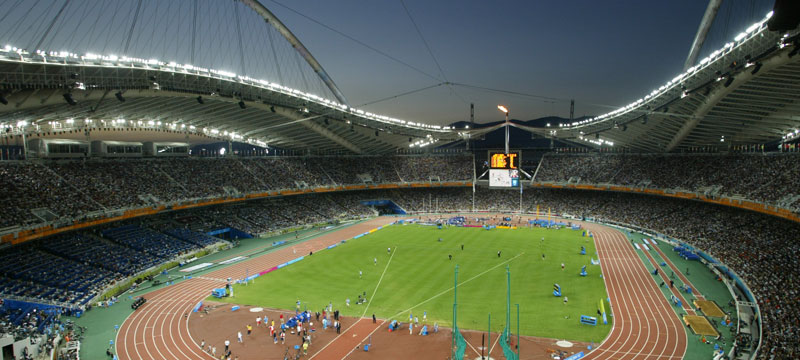
Athens Olympic Stadium
The architecture of the Athens Olympic Stadium is a remarkable blend of modern innovation and historical reverence, embodying the essence of Greek culture. It stands as a celebration of athleticism while encapsulating the principles of sustainability, making it a prototype for future sports facilities worldwide.
This section will delve into the design philosophy behind the stadium, its structural magnificence, and the ongoing commitment to sustainability that shapes its identity.
Design Inspired by Athens Olympic Stadium
The architecture of the Athens Olympic Stadium draws heavily from Greece’s rich history while incorporating cutting-edge design elements. The stadium’s flowing lines and sweeping curves pay homage to the ancient structures that once graced the landscape of Greece, resonating with a sense of timelessness. The inspiration from the ancient Greek amphitheaters is palpable, as they fostered an intimate connection between spectators and performers, a crucial aspect of the spectators’ experience during athletic events Kkwin.fish.
Every element of the stadium’s design reflects a profound respect for the cultural heritage of Greece. The façade, composed of local materials, establishes a dialogue between the stadium and its surroundings, honoring both the landscape and the architecture that define Athens. The careful integration of natural light within the spectators’ areas is designed not only for aesthetics but also to enhance the spectators’ experience, promoting a sense of belonging and community during events.
The design philosophy behind the stadium emphasizes the importance of engagement. Architects facilitated this by creating outdoor spaces, like promenades and viewing platforms, where attendees can enjoy breathtaking views of the Acropolis and other historic sites. Such design choices ensure that the stadium is more than just a structure for sports; it acts as a historical landmark that connects the present with the glorious past.
Structural Innovations and Sustainability
The Athens Olympic Stadium is also celebrated for its structural innovations that cater to both safety and sustainability. The building employs state-of-the-art engineering techniques using advanced materials that provide strength and durability while minimizing environmental impact. For instance, the use of a lightweight cable-supported roof allows for expansive spans without compromising safety or aesthetic value, demonstrating the seamless marriage of form and function.
Sustainable practices play a foundational role in the stadium’s daily operations. The incorporation of renewable energy sources, such as solar panels, serves to significantly reduce its carbon footprint. Not only does this mitigate the environmental impacts typically associated with large sporting venues, but it also sets a precedent for future developments in the industry. The stadium effectively showcases the marriage of technology and eco-consciousness, making sustainability a core principle of its operation and design.
Innovative systems such as rainwater harvesting and efficient waste management facilities highlight the commitment to sustainable practices. These technologies ensure that resources are conserved and efficiently used, reinforcing the stadium’s purpose as a model for environmentally responsible architecture in sporting venues. As cities confront climate change, the Athens Olympic Stadium serves as a pioneering beacon of hope—a showcase of how sporting venues can lead the way in sustainable architecture.
User-Centric Features and Adaptability
The design of the Athens Olympic Stadium also places significant emphasis on user experience, accommodating diverse audiences and their unique needs. This approach to design is rooted in the belief that sporting events should be accessible to everyone, fostering inclusiveness and unity. Features such as ample seating arrangements, designated areas for spectators with disabilities, and extensive amenities contribute to a welcoming atmosphere.
Adaptability is a cornerstone of the stadium’s functionality. Retractable roofs and modular seating allow for a seamless transition between different types of events, enhancing the stadium’s versatility. These features enable the venue to not only host sports events but also concerts, festivals, and cultural exhibitions—broadening its appeal and ensuring its usage throughout the year. The infrastructural design is an exemplary testament to planning that transcends the immediate, paving the way for continued relevance in future generations.
User-centric designs also include amenities like family-friendly spaces, hospitality areas, and interactive displays that elevate the spectators’ overall experience. The combination of modern technologies and intuitive layout enhances the comfort and enjoyment of attendees during events.
The intersection of flexibility, accessibility, and aesthetic appeal embodied in the Athens Olympic Stadium demonstrates a shift in the way modern sports venues are conceived. It is about creating spaces that foster connection—between the venue, its history, and its visitors, ensuring that the exceedingly rich cultural tapestry of Greece finds expression in the very essence of the stadium.





